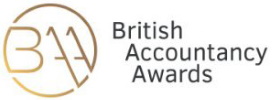HM Revenue & Customs (HMRC) has put the estimated tax gap – the difference between tax due and what is actually collected – at £35 billion for 2011-12.
The figure, announced on 11 October, represents seven per cent of tax due and continues a consistent downward trend in the size of the gap over the last six years. In 2005-06 it stood at 8.3 per cent of tax due.
The tax gap is calculated using around 30 separate estimates for different taxes and is broken down by type of tax, customer group and taxpayer behaviour, including tax evasion and avoidance, customer error, the hidden economy, criminal attacks and where tax cannot be collected because businesses have become insolvent.
Edward Troup, HMRC’s tax assurance commissioner, said: “The range of non-compliance behaviours revealed by these tax gap figures underline why it is so important for HMRC to step up our wide-ranging activities against the minority who aren’t paying what’s due, whether they are SMEs, individuals, big business or organised criminals.”
Since 2010, the government has invested nearly £1 billion in improving tax compliance and on 7 October HMRC launched its latest campaign, targeting health professionals.
The Health and Wellbeing Tax Plan offers health professionals who have not told HMRC about taxable income a time-limited opportunity to bring their tax affairs up-to-date on the best terms available.
The campaign is targeting physiotherapists, occupational therapists, chiropractors, osteopaths, chiropodists and podiatrists. Homeopaths, dieticians, nutritional therapists, reflexologists, acupuncturists, psychologists, and speech, language and art therapists are also covered but doctors, dentists, nurses and social workers are excluded.
They have until 31 December 2013 to tell HMRC that they would like to take part in the campaign and until 6 April 2014 to disclose and pay tax owed. If they do so, any penalty they might have to pay will be lower than if HMRC has to approach them first.
HMRC said that from 6 April, it would use information it holds from third parties and regulatory bodies to identify people who have not paid what they owe and that penalties – or even criminal prosecutions – could follow.
Link: HMRC campaigns















